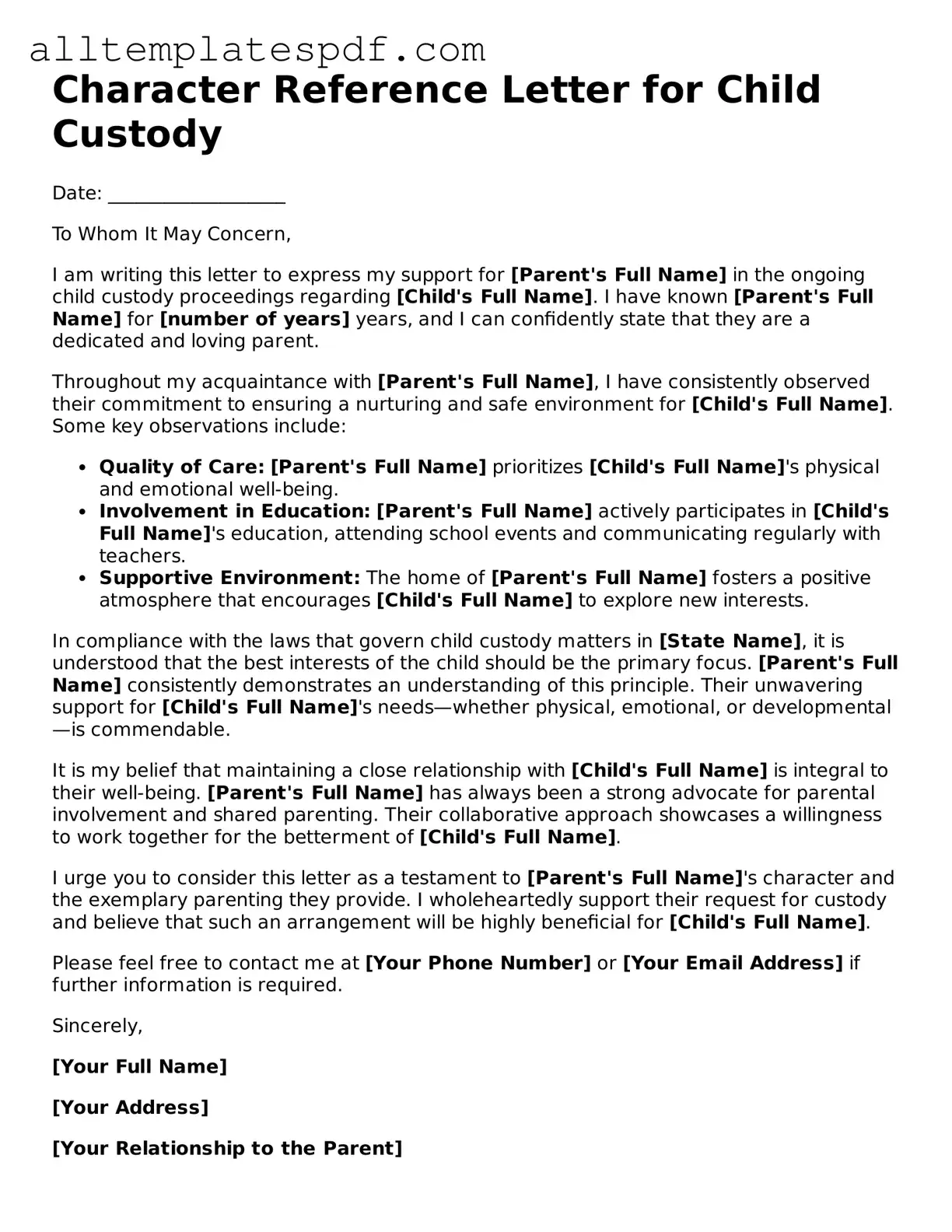Filling out a Character Reference Letter for Child Custody form can be challenging. Many individuals make common mistakes that can affect the outcome of the custody case. One frequent error is failing to provide specific examples of the child's relationship with the parent. General statements about the parent's character may not carry as much weight as detailed anecdotes that illustrate their parenting skills.
Another mistake is neglecting to include the writer's qualifications. A character reference should ideally come from someone who has a credible relationship with the parent or child. Without establishing this connection, the letter may lack the necessary authority and impact. It is important to clearly state how long the writer has known the parent and in what capacity.
Additionally, some individuals overlook the importance of maintaining a professional tone. While the letter should be heartfelt, it must also be respectful and objective. Emotional language or overly sentimental remarks can detract from the letter’s credibility. It is essential to strike a balance between personal sentiment and factual information.
Another common mistake involves failing to address the specific needs of the child. A well-crafted letter should touch on how the parent meets the child's emotional and developmental needs. Ignoring this aspect may weaken the argument for custody. Writers should focus on the parent’s ability to provide a stable and nurturing environment.
Many people also forget to proofread their letters. Spelling and grammatical errors can undermine the professionalism of the document. A polished letter enhances the writer's credibility and reflects the seriousness of the matter at hand. Taking the time to review the content can make a significant difference.
Some references may also include irrelevant information. Sticking to pertinent details about the parent's character and parenting abilities is crucial. Extraneous information can confuse the reader and dilute the main message. Each sentence should serve a purpose in supporting the case for custody.
Another mistake is failing to sign and date the letter appropriately. A signature adds authenticity to the document, while the date provides context for the reference. Without these elements, the letter may be viewed as incomplete or less credible.
Moreover, some individuals may not consider the recipient of the letter. Tailoring the content to address the specific concerns of the court can enhance its effectiveness. Understanding what the court looks for in a character reference can help the writer focus on relevant qualities and experiences.
Lastly, a common oversight is not following the court's guidelines for submission. Each jurisdiction may have specific requirements regarding format, length, and content. Ignoring these guidelines can result in the letter being dismissed or not taken seriously. Adhering to the court's rules is essential for maximizing the letter's impact.
